|
Books Should Be Free Loyal Books Free Public Domain Audiobooks & eBook Downloads |
|
|
Books Should Be Free Loyal Books Free Public Domain Audiobooks & eBook Downloads |
|
Literature |
|---|
|
Book type:
Sort by:
View by:
|
By: Day Kellogg Lee (1816-1869) | |
|---|---|
 Summerfield or, Life on a Farm
Summerfield or, Life on a Farm
| |
By: de Troyes Chrétien (12th cent.) | |
|---|---|
 Cliges; a romance
Cliges; a romance
| |
By: Dean Charles Ing | |
|---|---|
 Tight Squeeze
Tight Squeeze
| |
By: Dell H. Munger (1862-) | |
|---|---|
 The Wind Before the Dawn
The Wind Before the Dawn
| |
By: Demetrios Vikelas (1835-1908) | |
|---|---|
 Stories by Foreign Authors: Polish, Greek, Belgian, Hungarian
Stories by Foreign Authors: Polish, Greek, Belgian, Hungarian
| |
By: Desmond Byrne | |
|---|---|
 Australian Writers
Australian Writers
| |
By: Desmond Winter Hall (1909-1992) | |
|---|---|
 A Scientist Rises
A Scientist Rises
| |
 Raiders Invisible
Raiders Invisible
| |
By: Dhan Gopal Mukerji (1890-1936) | |
|---|---|
 Kari the Elephant
Kari the Elephant
The adventures of an Indian boy and his beloved elephant. Born near Calcutta, Mukerji won the Newbury Medal for children's fiction. | |
By: Dillon Wallace (1863-1939) | |
|---|---|
 The Story of Grenfell of the Labrador A Boy's Life of Wilfred T. Grenfell
The Story of Grenfell of the Labrador A Boy's Life of Wilfred T. Grenfell
| |
 The Gaunt Gray Wolf A Tale of Adventure With Ungava Bob
The Gaunt Gray Wolf A Tale of Adventure With Ungava Bob
| |
By: Dinah Craik (1826-1887) | |
|---|---|
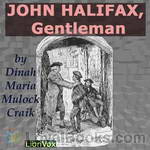 John Halifax, Gentleman
John Halifax, Gentleman
This novel, published in 1856, was one of the popular and beloved novels in the Victorian era. It is told in the first person by Phineas Fletcher, an invalid son of a Quaker tanner who is presented to us in the beginning as a lonely youth. John Halifax, the first friend he ever had, is a poor orphan who is taken in by his father to help in the work which his sickly son can't constantly do. Phineas tells us in an unforgettable way how John succeeded in rising from his humble beginning and become a wealthy and successful man. But with the money come horrible troubles... In an unforgettable manner, we learn to know all the characters of the novel as if they really lived. | |
By: Dinah Maria Craik (1826-1887) | |
|---|---|
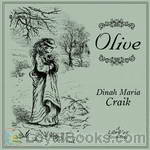 Olive
Olive
Inspired by Jane Eyre, Dinah Maria Craik's 1850 novel, Olive, was one of the first to feature a disabled central character. 'Slightly deformed' from birth, Olive believes that she will never be able to marry like other women, so she devotes her life to her art, her mother, and above all, her religion. It takes a dark secret from the past and a new, fascinating acquaintance, to make her realize what her life could be. | |
By: Dinah Maria Mulock Craik (1826-1887) | |
|---|---|
 Agatha's Husband A Novel
Agatha's Husband A Novel
| |
By: Dion Clayton Calthrop (1878-1937) | |
|---|---|
 The Pirate's Pocket Book
The Pirate's Pocket Book
| |
By: Don Marquis (1878-1937) | |
|---|---|
 The Cruise of the Jasper B.
The Cruise of the Jasper B.
| |
 Dreams and Dust
Dreams and Dust
| |
 Hermione's Group of Thinkers
Hermione's Group of Thinkers
| |
By: Donald E. Westlake (1933-) | |
|---|---|
 The Risk Profession
The Risk Profession
| |
 They Also Serve
They Also Serve
| |
By: Donald Grant Mitchell (1822-1908) | |
|---|---|
 Dream Life A Fable Of The Seasons
Dream Life A Fable Of The Seasons
| |
By: Donald Lemen Clark (1888-1966) | |
|---|---|
 Rhetoric and Poetry in the Renaissance A Study of Rhetorical Terms in English Renaissance Literary Criticism
Rhetoric and Poetry in the Renaissance A Study of Rhetorical Terms in English Renaissance Literary Criticism
| |
By: Donald McGibney | |
|---|---|
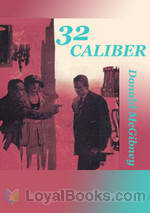 32 Caliber
32 Caliber
The recent interest that's being generated in the pulp fiction writers of the 1920s has lead to many of the books of that genre being resurrected and read once again. For modern-day readers, these represent what are now called “airport-lounge reads” and ideal for those few hours that you have to kill waiting in an airport or railway station, while traveling or on holiday, when you don't want anything too heavy to weigh you down! Pulp fiction, so called because the books were generally printed on cheaper paper made from recycled wood pulp, had certain characteristics... | |
By: Donald Ogden Stewart | |
|---|---|
 Perfect Behavior
Perfect Behavior
A humorous guide to manners and etiquette for ladies and gentlemen in a social "crises," published in 1922. (Introduction by Samanem) | |
By: Donald Wandrei (1908-1987) | |
|---|---|
 Raiders of the Universes
Raiders of the Universes
It was the 34th century and all five of the Federation of Planets around Sol were buzzing with their usual activity when the Raiders appeared. They were indeed Raiders of Universes because they had ravaged many systems before reaching Earth and showed no signs of slowing down in the least. Their weapons were invincible, their greed merciless and their natures completely alien. Indeed 'they' were from another dimension entirely. Eating up entire solar systems and planets, they slowed down just a bit when intelligent life was found on Earth... | |
By: Donn Byrne (1889-1928) | |
|---|---|
 The Wind Bloweth
The Wind Bloweth
| |
By: Dornford Yates (1885-1960) | |
|---|---|
 Berry and Co.
Berry and Co.
| |
 The Brother of Daphne
The Brother of Daphne
| |
 Jonah and Co.
Jonah and Co.
| |
 Anthony Lyveden
Anthony Lyveden
| |
By: Dorothy Canfield Fisher (1879-1958) | |
|---|---|
 The Squirrel-Cage
The Squirrel-Cage
| |
By: Dorothy Kilner (1755-1836) | |
|---|---|
 Life and Perambulations of a Mouse
Life and Perambulations of a Mouse
| |
By: Dorothy Richardson (1873-1957) | |
|---|---|
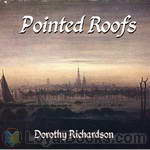 Pointed Roofs
Pointed Roofs
Miriam Henderson is one of what novelist Dolf Wyllarde (in her great work, The Pathway of the Pioneer) termed "nous autres," i.e., young gentlewomen who must venture forth and earn their living after their fathers have been financially ruined. Also, she has read Villette; she thus applies for and is offered a job teaching conversational English at a girls' school, albeit in Germany rather than France. Pointed Roofs describes her year abroad, as she endeavors to make her way in the hotbed of seething female personalities that populate the school, overseen by her employer, the formidable Fraulein... | |
 Backwater (Pilgrimage, Vol. 2)
Backwater (Pilgrimage, Vol. 2)
"Backwater" is the second volume of "Pilgrimage," a series of thirteen autobiographical novels by Dorothy Richardson considered to have pioneered the "stream of consciousness" technique of writing. In a review of the first volume in the series, "Pointed Roofs" (The Egoist April 1918), May Sinclair first applied the term "stream of consciousness" in her discussion of Richardson's stylistic innovations. Richardson, however, preferred the term "interior monologue." Miriam Henderson, the central character in Pilgrimage, is based on the author's own life between 1891 and 1915... | |
By: Douglas Grant (aka Isabel Ostrander) (1883-1924) | |
|---|---|
 Anything once
Anything once
An unlikely pair of wanderers they were; the orphan girl Lou and her travelling partner Jim Botts. Jim appeared in need of following some apparent 'rules' during the journey, while Lou seemed in need of better clothing, and perhaps some refinement. But who was most benefitting whom on the week-long journey from rural village to big city? And which of the two was willing to try anything once? (Introduction by Roger Melin) | |
By: Douglas William Jerrold (1803-1857) | |
|---|---|
 Mrs. Caudle's Curtain Lectures
Mrs. Caudle's Curtain Lectures
First serialized in Punch magazine in 1845, and officially published in book form in 1846, Mrs. Caudle's Curtain Lectures presents a collection of 37 lectures delivered by Mrs. Caudle to her husband as a means of reproach for his trivial infractions. Also, the author marvelously incorporates typical elements responsible for disagreements between spouses including the antipathetic mother-in-law, the ne’er-do-well friends, and the jealous outbursts. Jerrold’s charming piece of satire introduces the Victorian married couple, Mr... | |
By: Douglass Sherley (1857-1917) | |
|---|---|
 A Spray of Kentucky Pine Placed at the Feet of the Dead Poet James Whitcomb Riley
A Spray of Kentucky Pine Placed at the Feet of the Dead Poet James Whitcomb Riley
| |
 Love Instigated: The Story of a Carved Ivory Umbrella Handle
Love Instigated: The Story of a Carved Ivory Umbrella Handle
| |
By: Dudley H. (Dudley Howe) Miles (1881-) | |
|---|---|
 How to Write a Play Letters from Augier, Banville, Dennery, Dumas, Gondinet, Labiche, Legouvé, Pailleron, Sardou and Zola
How to Write a Play Letters from Augier, Banville, Dennery, Dumas, Gondinet, Labiche, Legouvé, Pailleron, Sardou and Zola
| |
By: Duncan Campbell Scott (1862-1947) | |
|---|---|
 Lundy's Lane and Other Poems
Lundy's Lane and Other Poems
| |
By: Dwight D. (Dwight David) Eisenhower (1890-1969) | |
|---|---|
 State of the Union Address
State of the Union Address
| |
By: E. (Emanuel) Haldeman-Julius (1888-1951) | |
|---|---|
 Dust
Dust
| |
By: E. C. (Edmund Clerihew) Bentley (1875-1956) | |
|---|---|
 Trent's Last Case
Trent's Last Case
| |
By: E. E. Boyd | |
|---|---|
 'Our Guy' or, The elder brother
'Our Guy' or, The elder brother
| |
By: E. E. Smith (1895-1965) | |
|---|---|
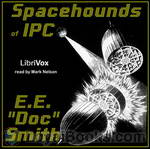 Spacehounds of IPC
Spacehounds of IPC
When the Inter-Planetary Corporation's (IPC) crack liner “IPV Arcturus” took off on a routine flight to Mars, it turned out to be the beginning of a unexpected and long voyage. There had been too many reports of errors in ship's flight positions from the Check Stations and brilliant physicist Dr. Percival (“Steve”) Stevens is aboard the Arcturus on a fact-finding mission to find out what's really happening, and hopefully save the honor of the brave pilots of the space-liner Arcturus from the desk-jockeys' in the Check Stations implications of imprecision - the nastiest insult you could cast at a ships pilot... | |
 Skylark Three
Skylark Three
This is a sequel to The Skylark of Space. The novel concerns Richard Seaton and his allies who have encounters with aliens while fighting DuQuesne and the Fenachrone.. | |
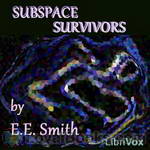 Subspace Survivors
Subspace Survivors
A team of space travelers are caught in a subspace accident which, up to now, no one has ever survived. But some of the survivors of the Procyon are not ordinary travelers. Their psi abilities allow them to see things before they happen. But will it be enough?Smith's story "Subspace Survivors" first appeared in the July 1960 issue of the magazine Astounding. | |
 Galaxy Primes
Galaxy Primes
They were four of the greatest minds in the Universe: Two men, two women, lost in an experimental spaceship billions of parsecs from home. And as they mentally charted the Cosmos to find their way back to earth, their own loves and hates were as startling as the worlds they encountered. | |
By: E. E. “Doc” Smith (1890-1965) | |
|---|---|
 Triplanetary, First in the Lensman Series
Triplanetary, First in the Lensman Series
Triplanetary was first serialized in Amazing Stories in 1934. After the Lensman series became popular, Smith took his Triplanetary story and turned it into the first of the Lensman series, using it as a prequel to give the back story for the protaganists in the Lensmen series. He added 6 new chapters, doubling it in size and it's really a different book from the serialized novel, being published 14 years after the first. It was put into Gutenberg just last year. The novel covers several episodes in an eons-long eugenics project of the super-intelligences of the Arisia... | |
By: E. Frances (Eleanor Frances) Poynter | |
|---|---|
 My Little Lady
My Little Lady
| |
By: E. G. von Wald | |
|---|---|
 Shock Absorber
Shock Absorber
| |
By: E. Gallienne Robin | |
|---|---|
 Where Deep Seas Moan
Where Deep Seas Moan
| |
By: E. H. (Emily Hilda) Young (1880-1949) | |
|---|---|
 Moor Fires
Moor Fires
| |
By: E. M. Forster (1879-1970) | |
|---|---|
 Passage to India
Passage to India
E. M. Forster’s A Passage to India is widely acclaimed as one of the hundred best literary works of 20th century. Time magazine rates it among the top 100 English-language novels of all time. A Passage to India is set at the moment when the lasting supremacy of the British Raj could no longer be taken for granted. Imperial power had been effectively supported by old and deep-seated religious and cultural conflicts between India’s Hindu and Muslim populations, which divided and sapped the local powers ultimately needed to overthrew imperial rule in 1947... | |
 Howards End (version 3)
Howards End (version 3)
Considered Forster's masterpiece and one of the best books of the 20th century, Howards End tackles social conventions of the Edwardian era. The story focuses on three families in England at the beginning of the 20th century: the Wilcoxes, rich capitalists with a fortune made in the colonies; the half-German Schlegel siblings , whose cultural pursuits have much in common with the Bloomsbury Group; and the Basts, an impoverished young couple from a lower-class background. The idealistic, intelligent Schlegel sisters seek to help the struggling Basts and to rid the Wilcoxes of some of their deep-seated social and economic prejudices. - Summary by Lynne Thompson | |
By: E. Oe. (Edith Oenone) Somerville (1858-1949) | |
|---|---|
 Mount Music
Mount Music
| |
By: E. Pauline Johnson (1861-1913) | |
|---|---|
 Legends of Vancouver
Legends of Vancouver
| |
 The Moccasin Maker
The Moccasin Maker
| |
 The Shagganappi
The Shagganappi
| |
By: E. R. (Ernest Robertson) Punshon (1872-1956) | |
|---|---|
 The Bittermeads Mystery
The Bittermeads Mystery
| |